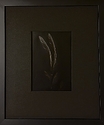tballphoto
Member
Been using the Df96 monobath, not the happiest with its results. so variable on the same roll. even when shooting the same scene multiple times with the same camera settings, each frame can turn out differently.
Would like to find a non toxic and odorless developer to use. Have thought about rodinal but ill be doing it in my bathroom and well, the first few uses of Df96 has a mild smell, then nothing i could detect. And some accounts claimed that Df96 had a horrid smell.
Would like to find a non toxic and odorless developer to use. Have thought about rodinal but ill be doing it in my bathroom and well, the first few uses of Df96 has a mild smell, then nothing i could detect. And some accounts claimed that Df96 had a horrid smell.






